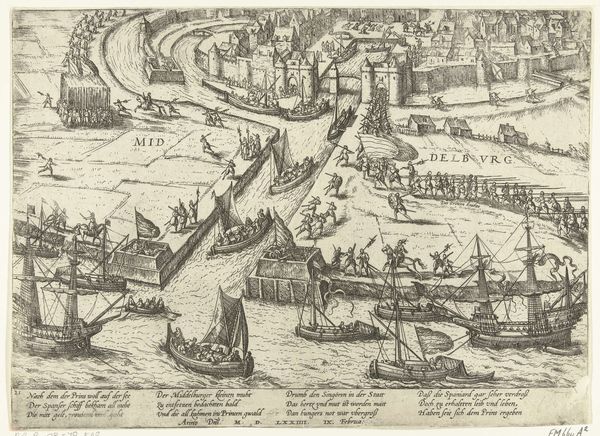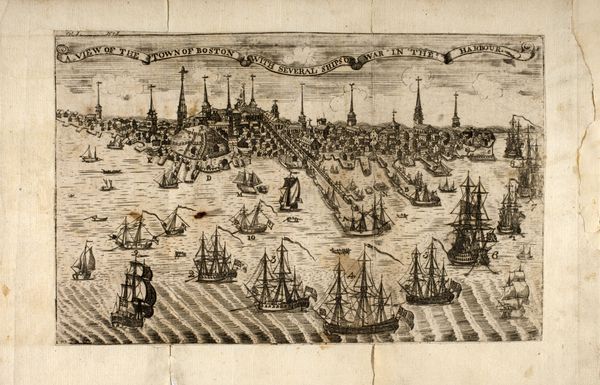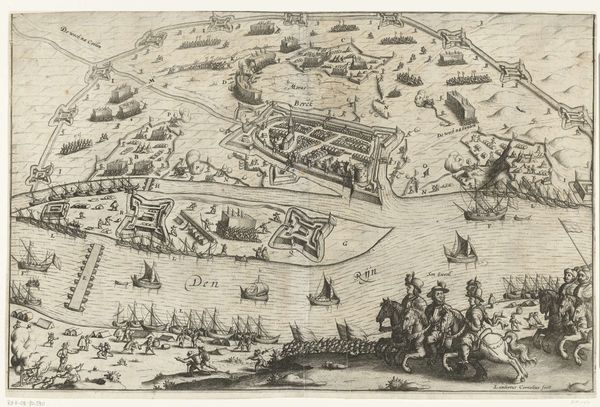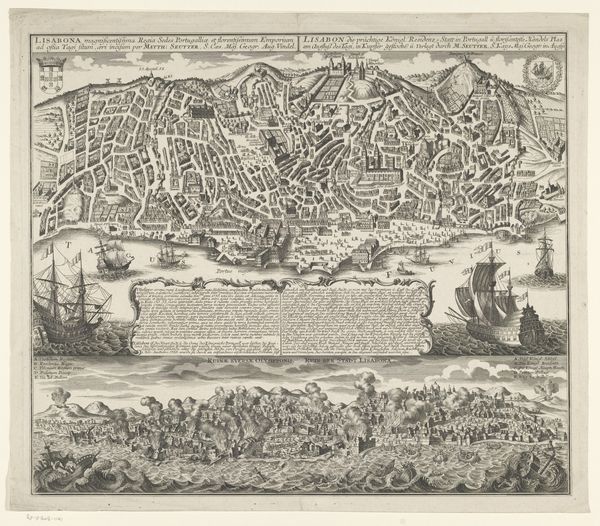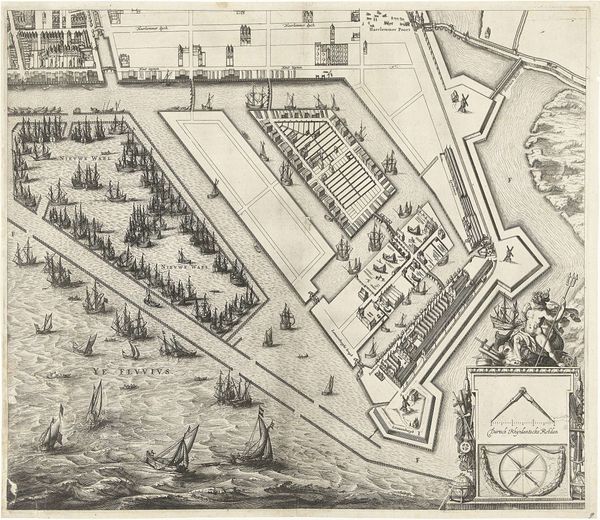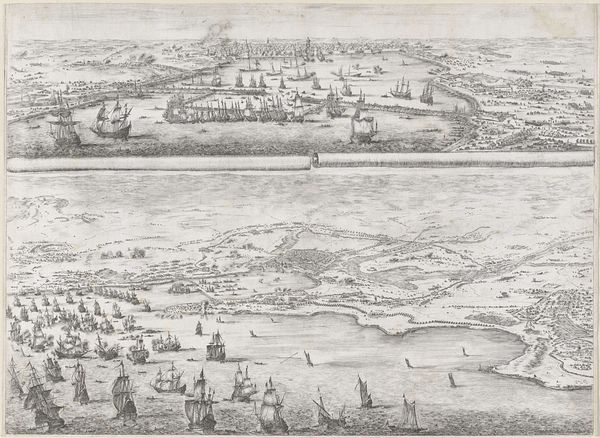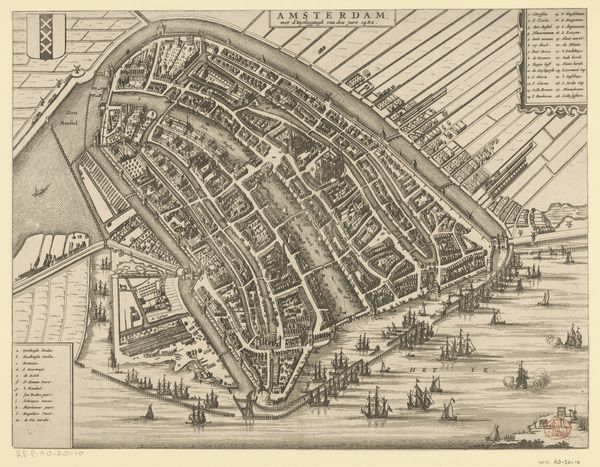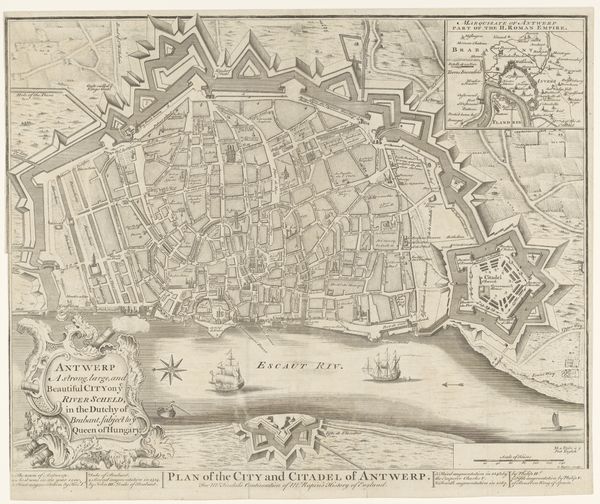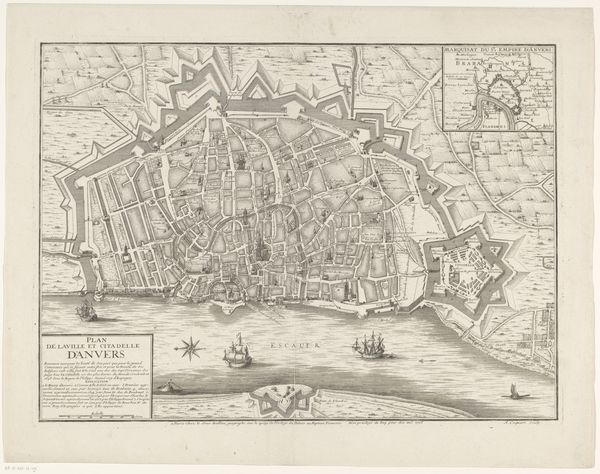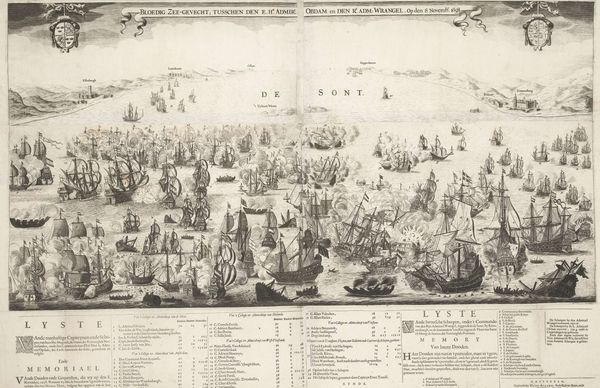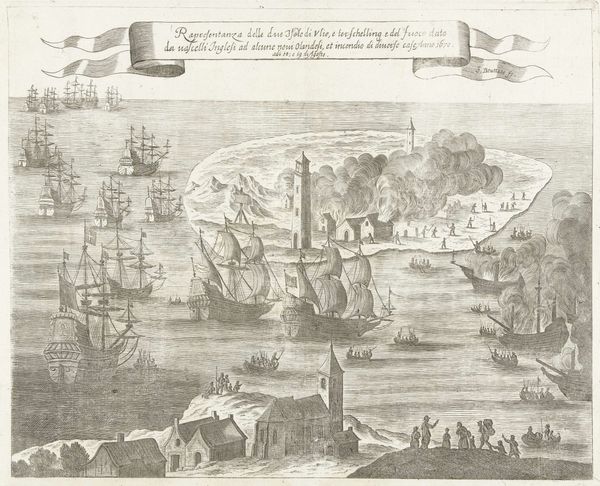
Plattegrond van Amsterdam (blad linksonder), 1625 1625
0:00
0:00
balthasarfloriszvanberckenrode
Rijksmuseum
drawing, print, etching, paper, ink, engraving
#
drawing
#
dutch-golden-age
# print
#
etching
#
landscape
#
paper
#
ink
#
geometric
#
cityscape
#
engraving
#
realism
Dimensions: height 460 mm, width 535 mm
Copyright: Rijks Museum: Open Domain
Curator: My first impression is wow. A dense, swirling hive, but with the promise of expansion... What about you? Editor: This is part of Balthasar Florisz. van Berckenrode’s map of Amsterdam, printed around 1625. Looking at this engraving, we aren’t just seeing a city; we’re seeing the engine of a burgeoning global power at the peak of the Dutch Golden Age. Curator: It feels almost aggressively geometric in places, then softens around the edges with these... whimsical waves? Like, "Here be dragons," but instead it's just regular ol' choppy waters. Editor: Absolutely. The precision with which the city’s layout is rendered—the rigid canals, the fortified walls—it's a testament to Dutch engineering prowess. But, this precision masks the underlying currents of colonialism and trade dominance that fueled that "Golden Age," what do you think? Curator: You see that text block nestled into the corner? I love imagining someone in the throes of a mid-17th-century real estate boom using it to navigate the canals. A modern-day street-view equivalent! But yeah, that geometric obsession can also seem dehumanizing in a way. Like each building, each person, reduced to a data point. Editor: Precisely. Maps like this aren't just neutral representations. They played a role in staking claims and solidifying power. Consider the positioning of Amsterdam, geographically blessed—or perhaps strategically violent—to intercept global trade routes and dominate economies around the globe. Each ship you see sailing freely into that harbor tells its own story. Curator: Ships are like, the period at the end of that long colonial sentence, right? So, with the knowledge that each sailing ship represents these voyages of colonization and economic power…Does that add another layer of complexity to this image? Editor: It does. Seeing the meticulous detail in the ships and docks…one has to recall that this entire enterprise depended on exploited labor, the trade in enslaved peoples. Even the paper this print is etched on likely passed through such hands at some point, too. Curator: Hmm, perhaps my whimsical interpretation was too glib! I’ll consider this from now on when I encounter cityscapes. Thanks for this different look! Editor: Anytime! Remember that images never exist in a vacuum. Every picture whispers complex truths and power dynamics. The job for us now is to discern these subtle messages to reveal broader discussions.
Comments
No comments
Be the first to comment and join the conversation on the ultimate creative platform.
